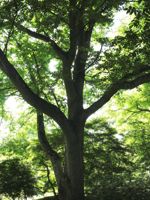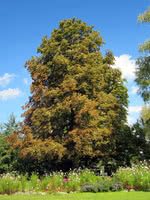Mon-Fri 9am - 5pm Mountain time
Horse Chestnut vs Manchurian Walnut
Juglans mandshurica
Aesculus hippocastanum
NOT AVAILABLE THIS SEASON - MIGHT RETURN
CUSTOM GROW
Manchurian Walnut is a large, broad and often multi-stemmed tree with ornamental qualities. This tree produces large, thick-shelled nuts that ripen in the fall. These edible walnuts are reportedly difficult to crack open. They are useful for attracting wildlife, especially squirrels.
The Manchurian Walnut contains and exudes much lesser quantities of allelopathic compounds, such as juglone (common to walnuts), that may prevent or impair growth of nearby plants. Therefore, it is commonly embraced as a safe walnut to plant.
There are reports of rare this species surviving winters to -45C with specimens growing and thriving in Alaska and Edmonton.
There is no regular supply of this species. It is rare and not produced each year.
Horse Chestnut is a medium sized deciduous tree that is native to Greece but has been grown in North America for hundreds of years. It produces large nuts.
A top CO2 absorbing species. Experts think this tree may help climate change more than others.
Manchurian Walnut Quick Facts
Horse Chestnut Quick Facts
Toxicity: most parts of plant are toxic

